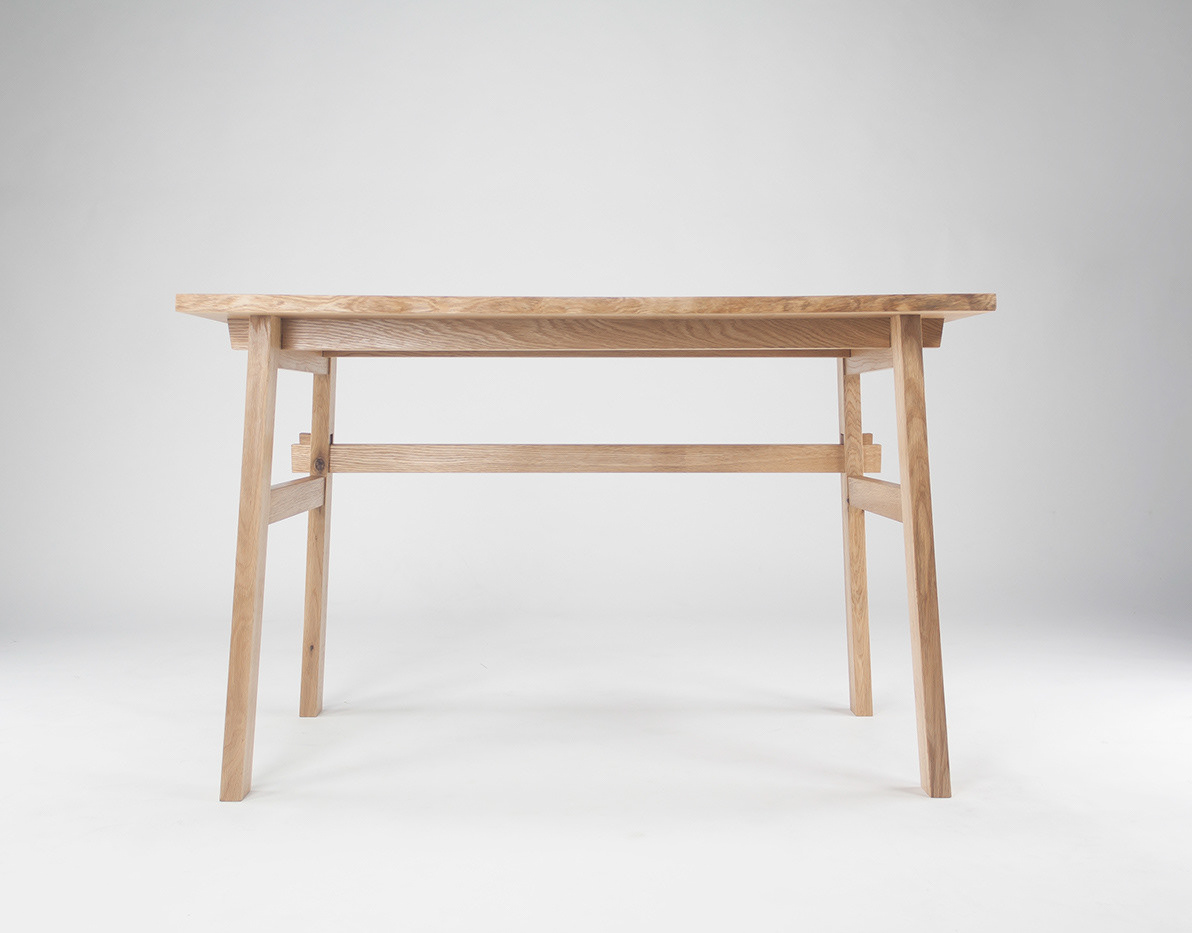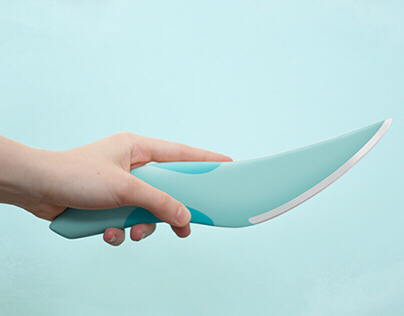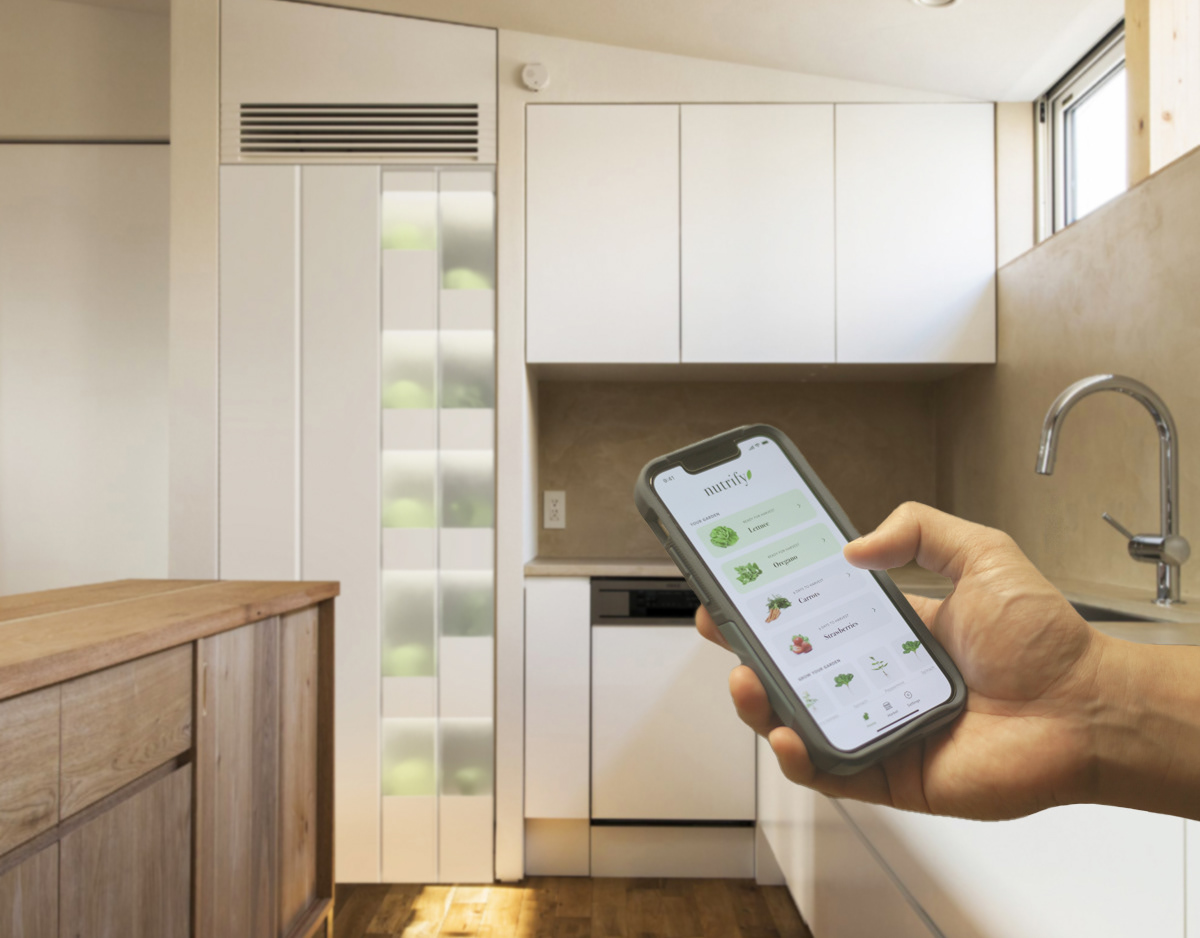BRAND PHILOSOPHY
"WITHOUT THOUGHT"
A collaborative project with Japanese housewares brand MUJI, this product design was an exercise in branding beyond visual identity. By adopting the MUJI mindset from the start of the design process, I developed a product that embodies the MUJI brand from concept to CMF.
With the guidance of MUJI designers in Japan, I designed a cutting board that takes advantage of natural affordances (MUJI designer Naoto Fukasawa’s “Without Thought” concept) in order to combine the best of wooden and plastic cutting boards.
THE MUJI BRAND
First, I analyzed MUJI's kitchen products to find the requirements for a design that would fit with the brand. I determined that using a single material (or two materials when functionally warranted) was a requirement. MUJI's assortment of products usually used unstained wood, ceramic in white or neutral colored glazes, glass, stainless steel, or plastic in white or black. In addition, the product should be simple and single-function and the product should have the simplest form possible to fulfill that function.
concept
mindful living
The assignment was to design a product for MUJI that embodied the concept of mindful living. After some contemplation about what mindful living was to me, I concluded that a clean lifestyle was the best way to leave room for mindfulness and enjoying each moment.
survey
attitudes toward cleaning
I decided to survey users to find out more about their attitudes toward cleaning and hopefully illuminate opportunities for making cleaning easier and more enjoyable.
However, by surveying target users, I found that most think of cleaning as an unenjoyable chore and would rather not do it at all.
opportunity
Cleanliness without effort
For that reason, I set out to design a product that would help users live a cleaner lifestyle without going to any conscious effort. I considered my own everyday life to uncover things and areas that I had a hard time keeping clean. As someone who cooks at home, the kitchen was one of the areas I wish were easier to keep clean. One specific issue I had was the warping and growth of mold on my wooden cutting board.
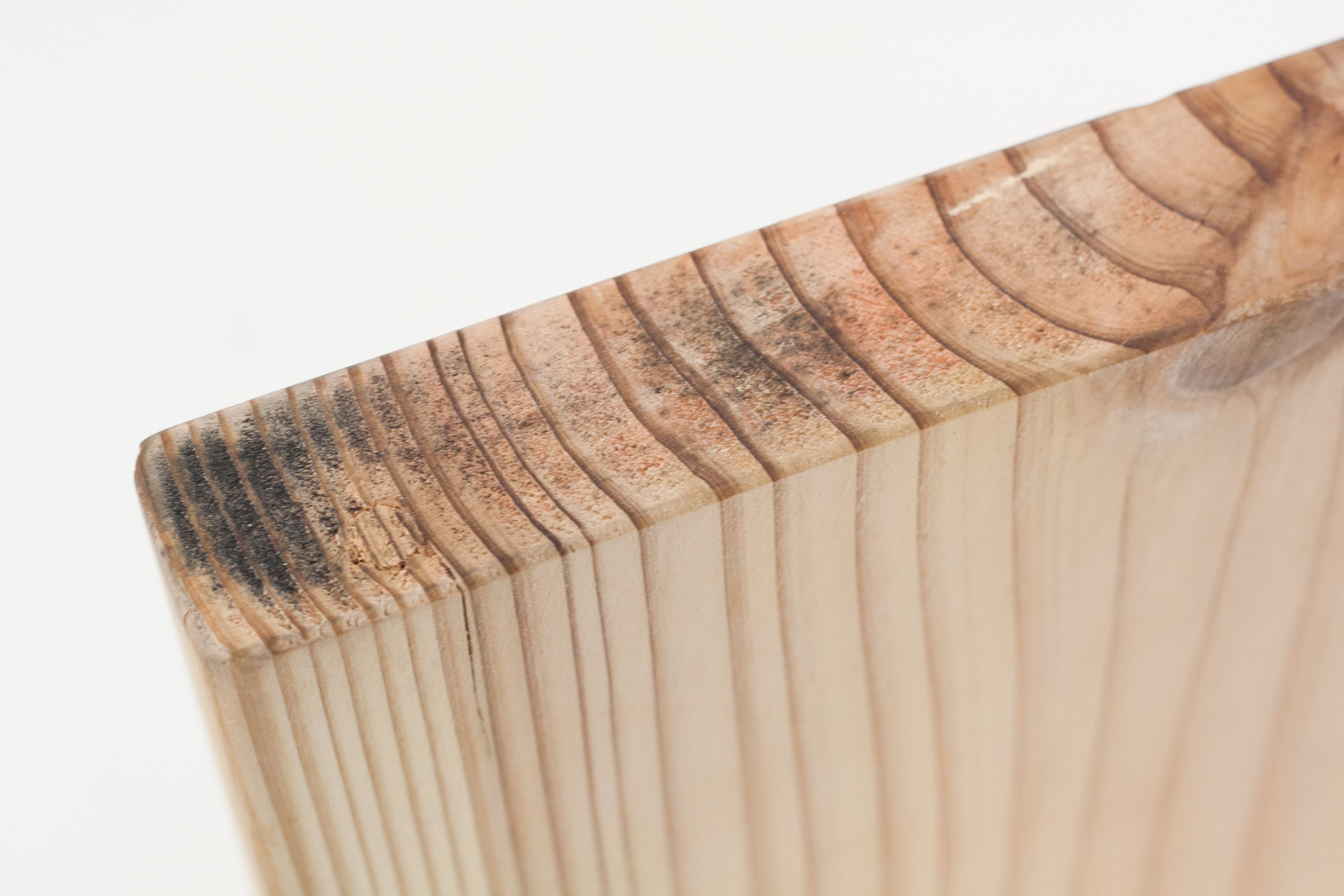
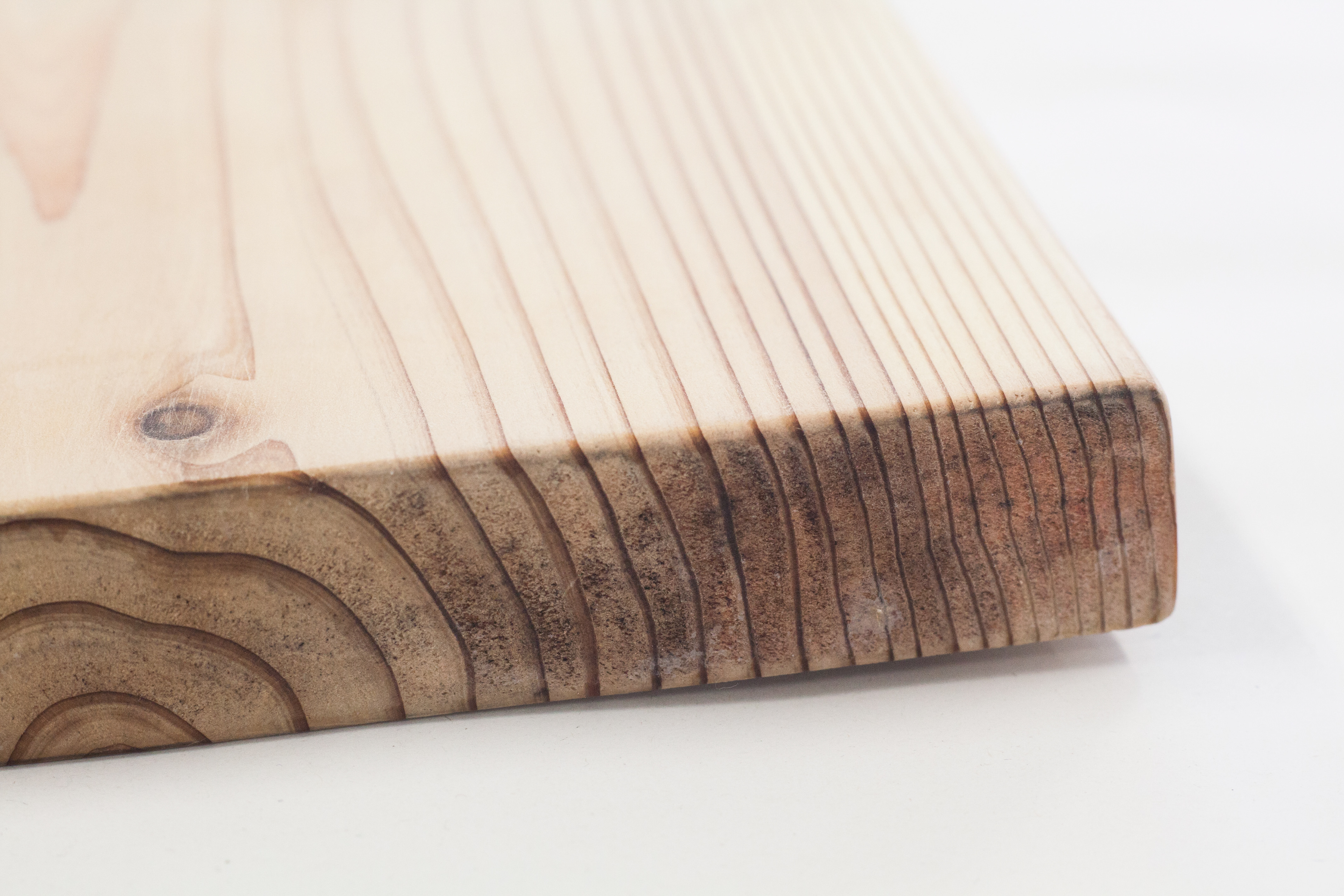
I was curious about whether other users of MUJI's own cypress cutting board had similar concerns, so I headed to MUJI's site to take a look at user reviews of the cutting board.
User reviews
Insights
From reading through real user reviews, I discovered the strong points and pain points of MUJI's existing wooden cutting board.
PROS:
- Lightweight
- Pleasant fragrance
- Soft cutting surface
CONS:
- Grows mold over time
- Warps over time
How might we...
Prevent mold and warping?
How might I design a cutting board that preserves the advantages of using a wooden cutting board while tackling the issues of mold and warping?
I came up with the approach of tackling these issues from the root. Both issues stem from water absorption over time, so I decided to nip water absorption in the bud through the cutting board design.
I wanted to come up with a design that prevented water absorption in order to eliminate mold growth and warping.
IDEATION
Taking into account the insights I gained from my user survey and online reviews of MUJI's existing cutting board, I got to work brainstorming ideas for a cutting board that would maintain the benefits of wooden cutting boards while preventing warping and the growth of mold. My approach to solving this problem was to prevent water from absorbing into the cutting board while standing up to dry.
PROTOTYPING
I brought my chosen idea to reality with a Hinoki Japanese cypress board with 3D printed polypropylene end pieces. I paid special attention to choosing a joint between the two materials that wouldn't allow water to pool within the fibers of the wooden board. This is why I chose a unique triangular joint to encourage water to escape the board's fibers with the help of gravity.
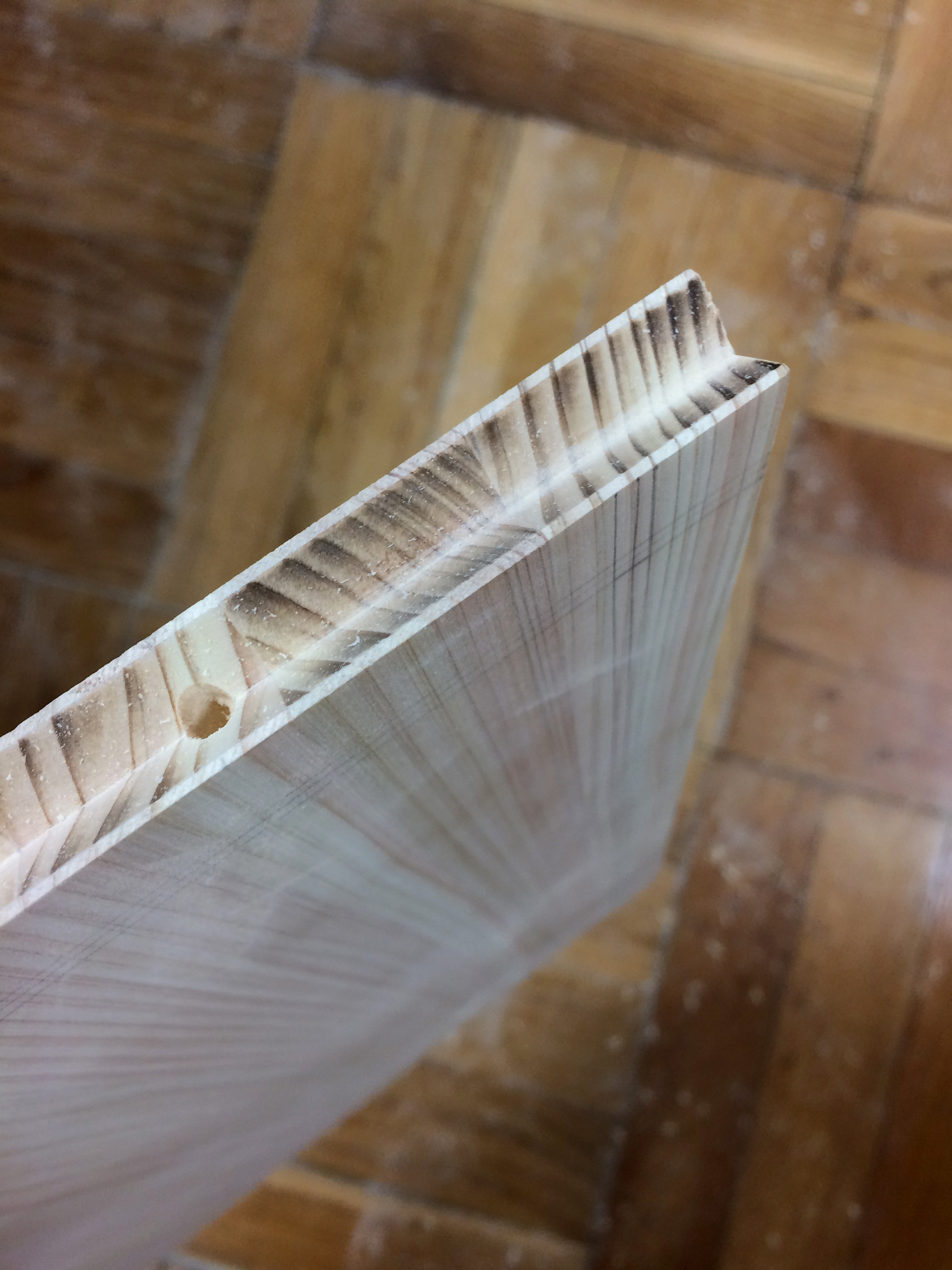
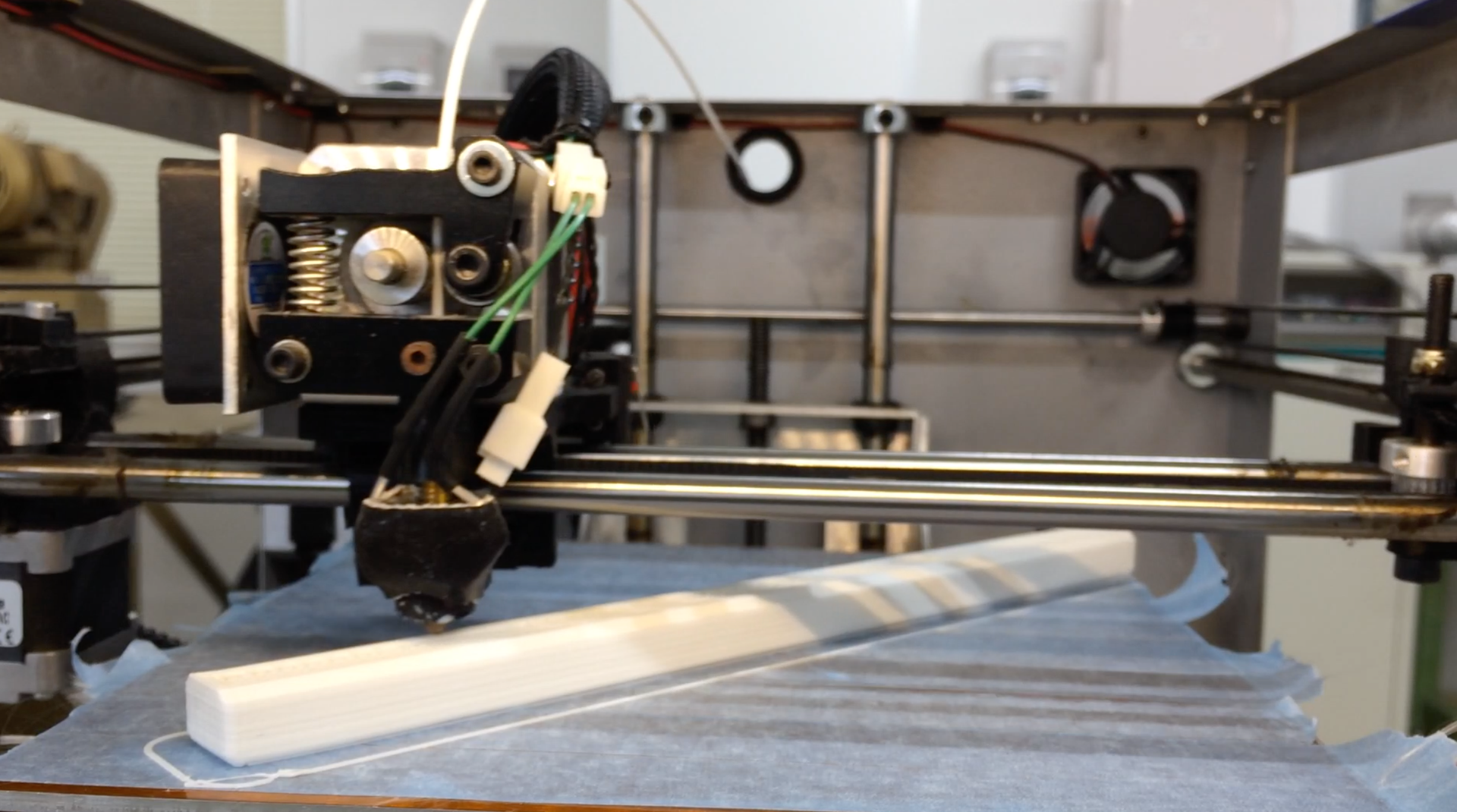
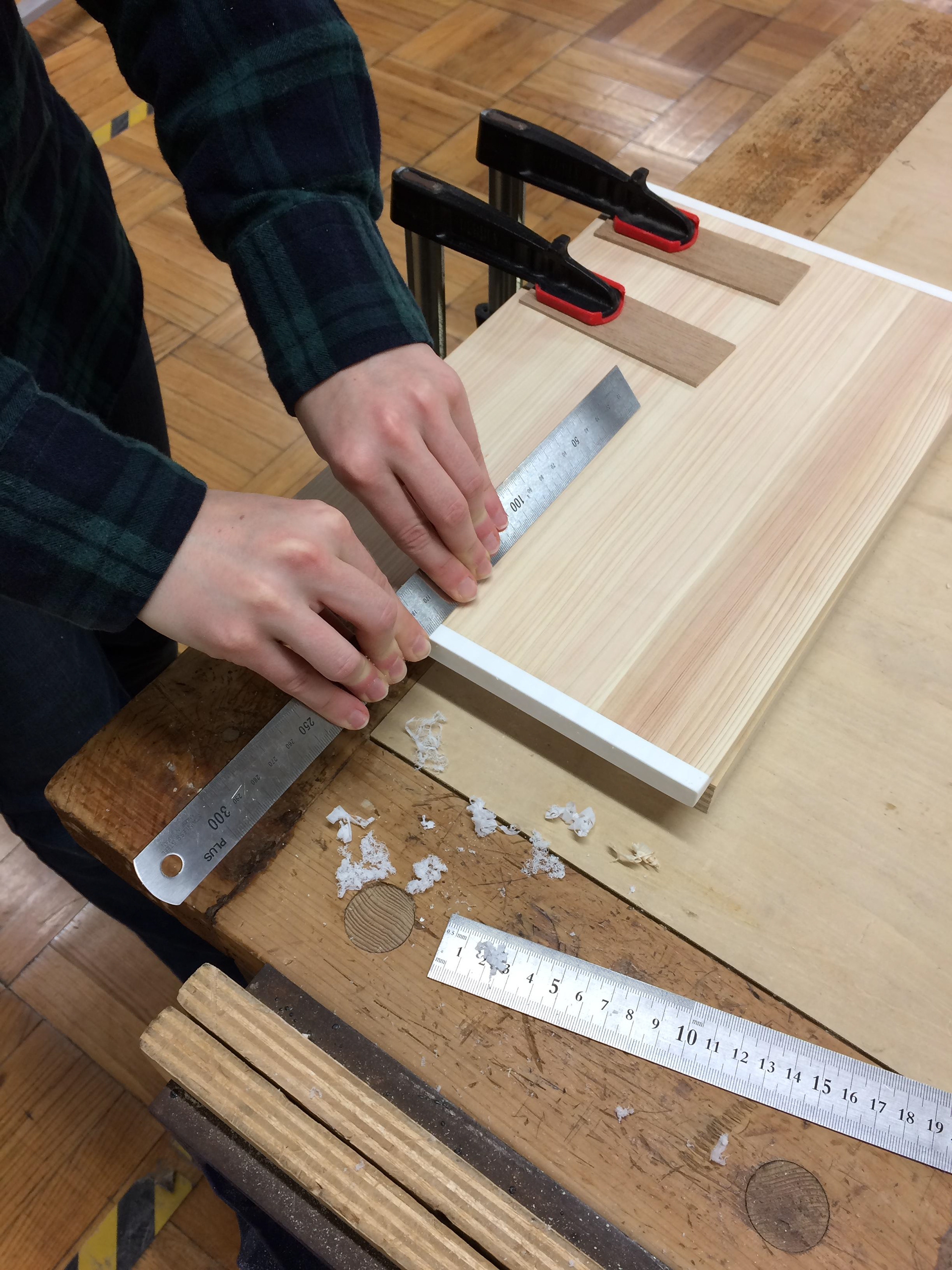
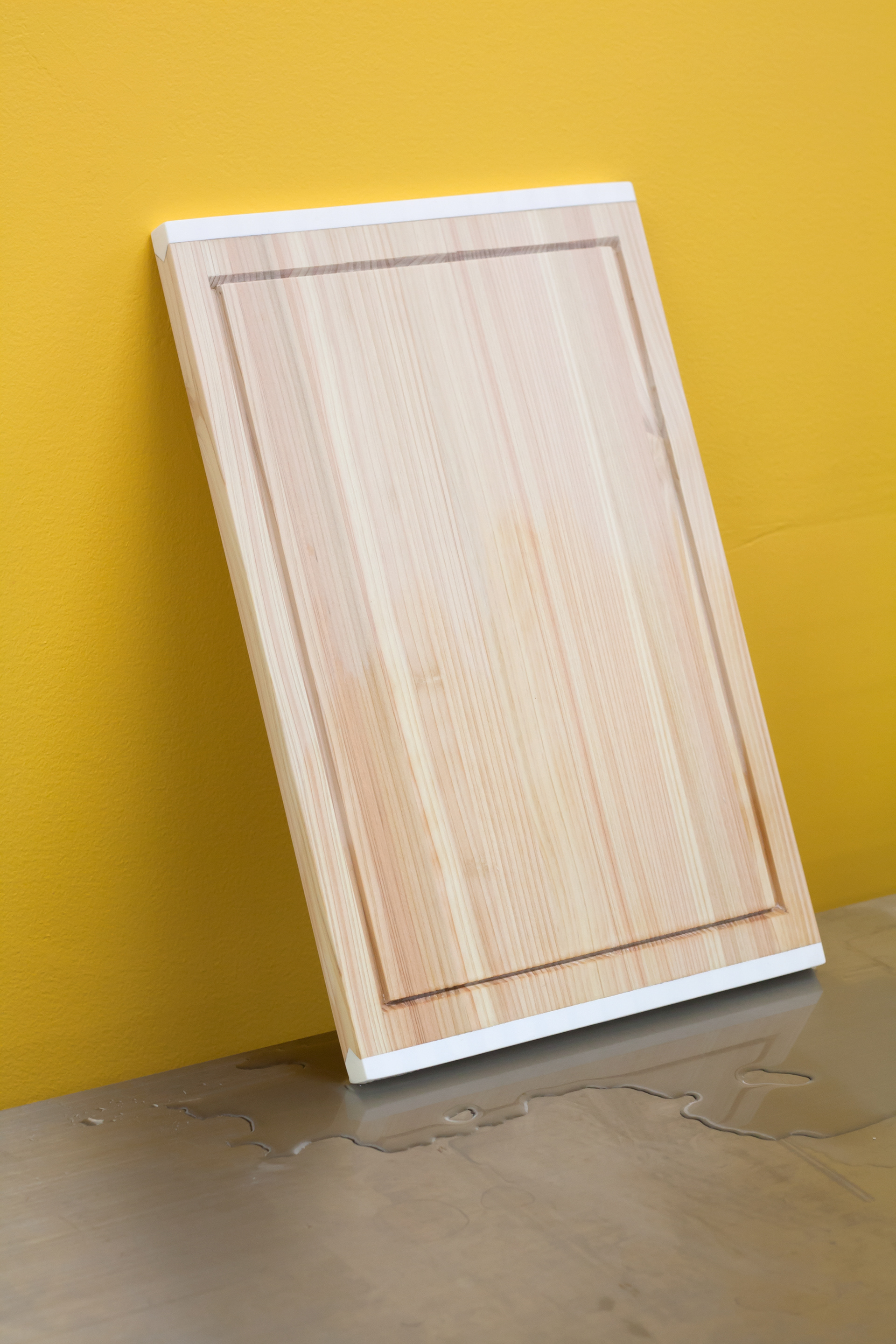
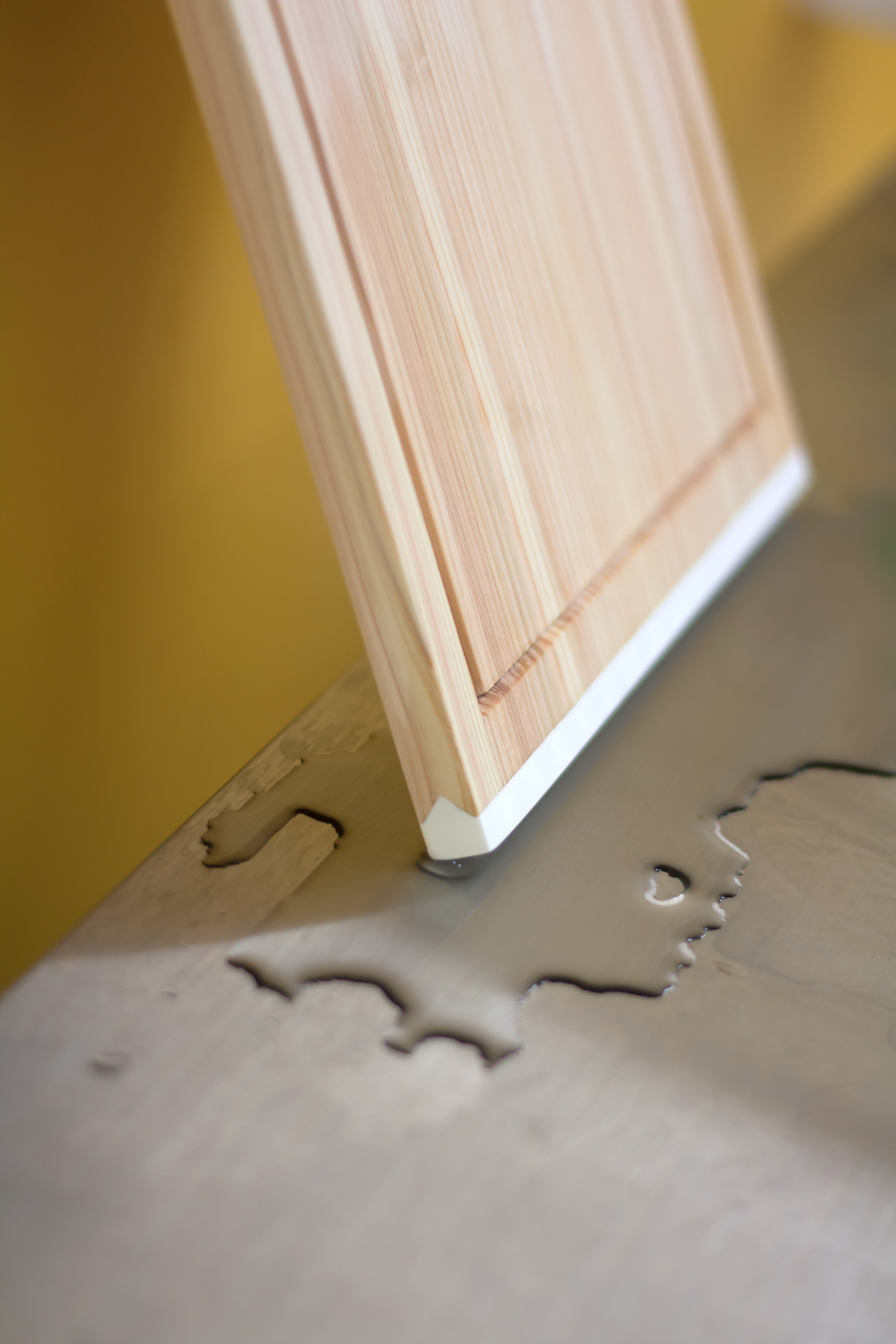
MOLD-FREE, WARP-RESISTANT, BUILT TO LAST
With its polypropylene plastic ends, this cypress cutting board is built to last without the worry of mold or warping. After washing, the board can be stood up on end and leaned against a wall to dry without the need for a stand. Even if water pools on the countertop, the water will not absorb into the cutting board, which prevents mold from growing. The plastic edge also prevents the wooden board from warping. With my design, users can enjoy all the benefits of a wooden cutting board without worrying about it being ruined by warping and mold. Rather than having to buy a separate cutting board stand to fulfill this purpose, they can intuitively prop the board itself directly on the counter.
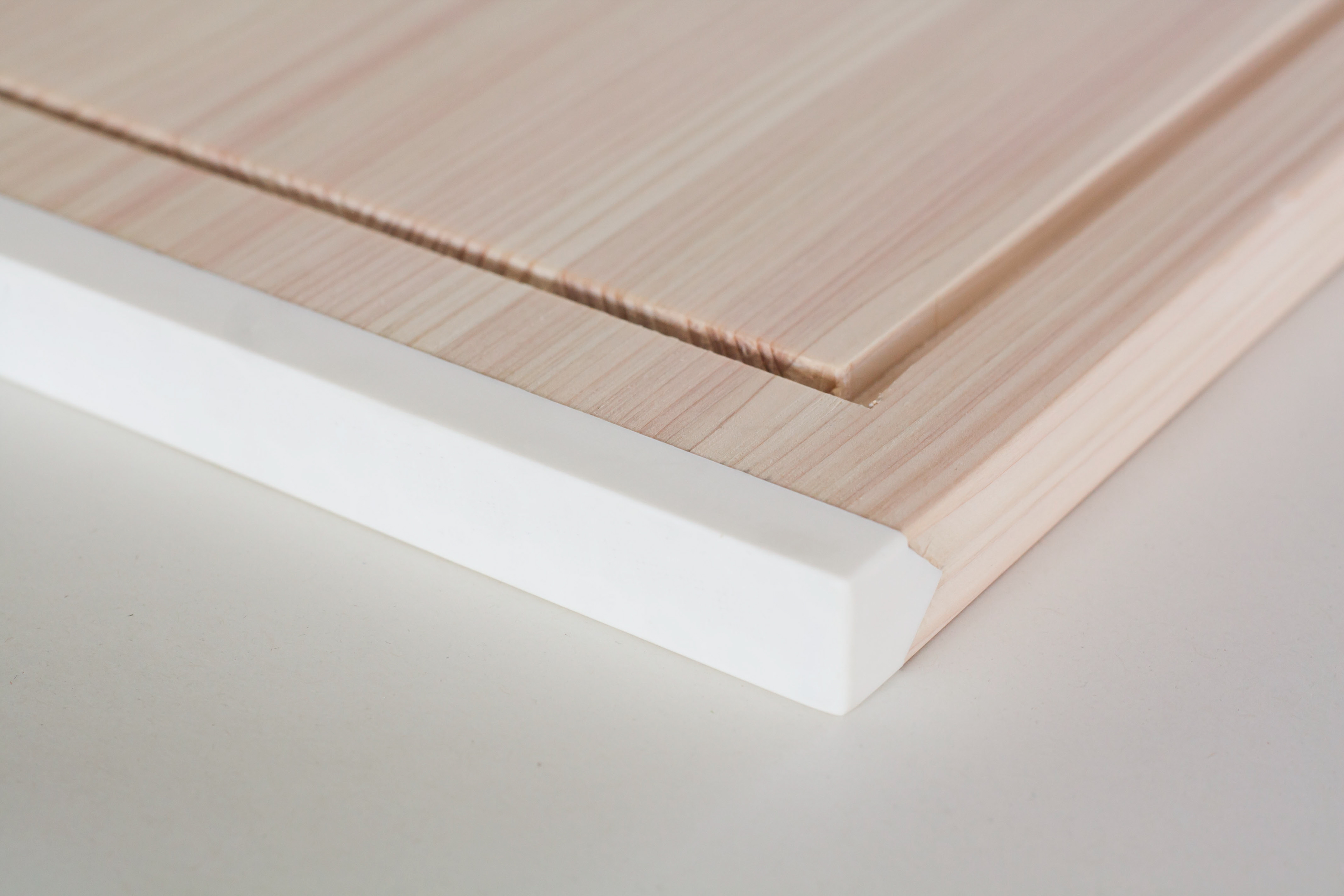
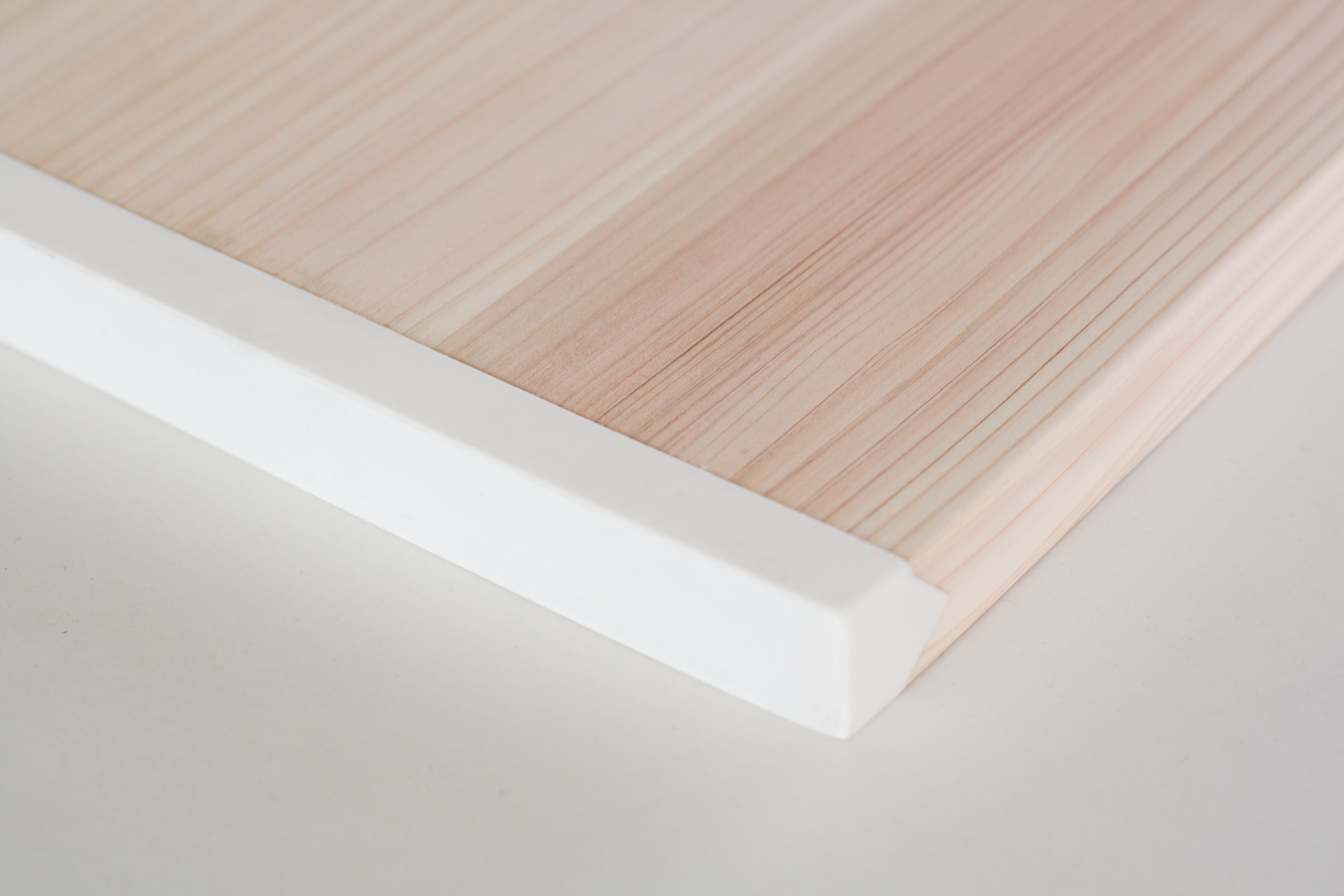
REVERSIBLE DESIGN
The minimal juice groove design makes it easy to tell the two sides apart without relying on graphics. This enables the user to designate each side as meat-only, vegetable-only, etc.
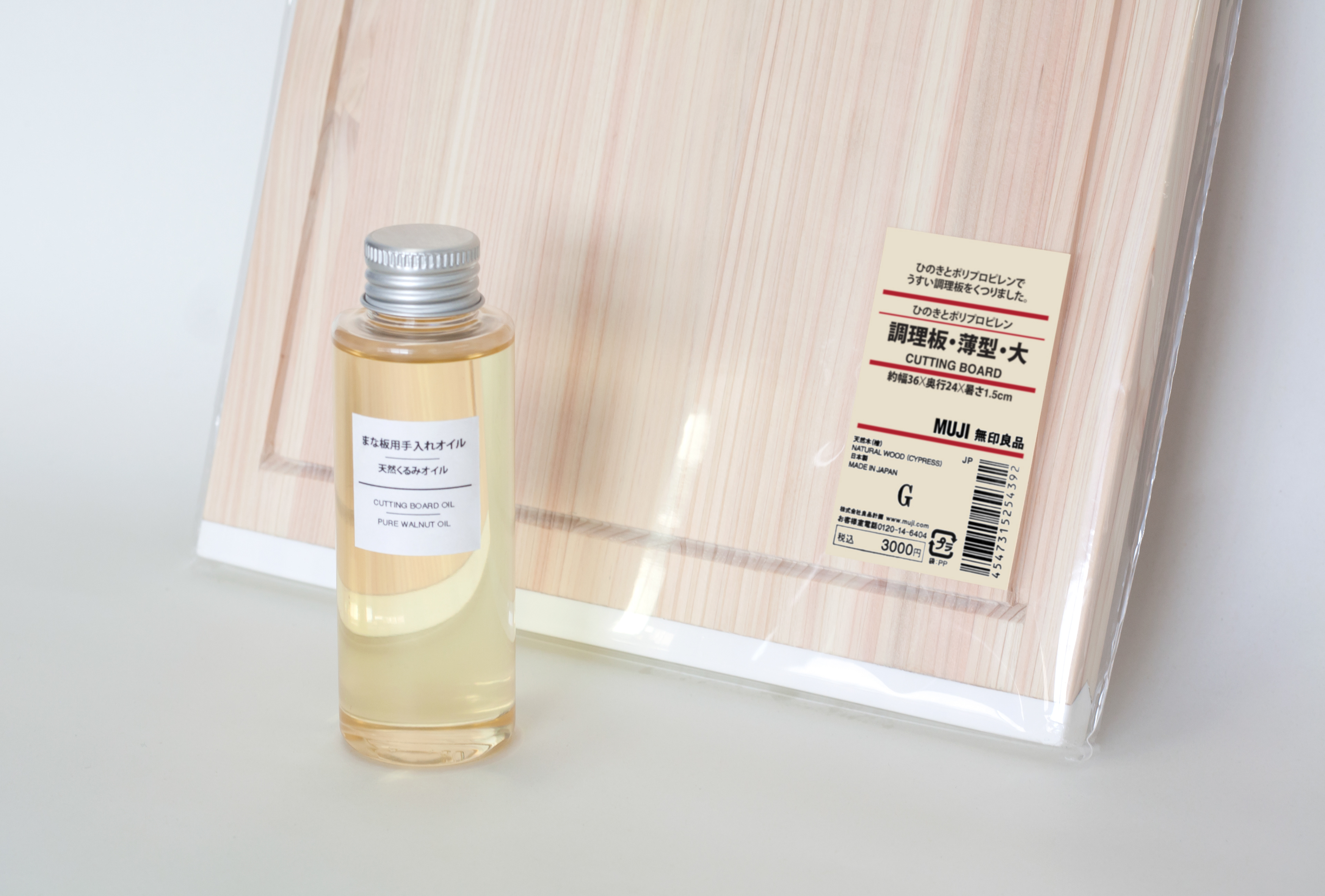
MAINTENANCE OIL
With regular oil treatment, the board becomes more water-resistant, protecting against mold growth and warping. In addition, the oil treatment makes the board more resistant to staining and brings out the natural beauty of cypress wood. This natural walnut oil is a food-safe drying oil that won’t remain greasy or sticky.
